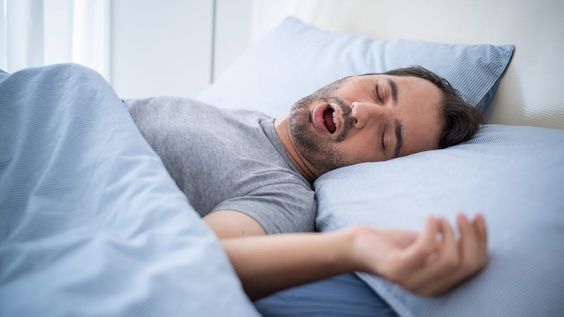Have you ever woken up feeling like you ran a marathon in your sleep? Groggy, headachy, and utterly drained? If so, you might be acquainted with the not-so-charming sleep thief known as sleep apnea. But fear not, fellow snoozers! This blog post is your one-stop guide to understanding and tackling this breathing bandit, armed with knowledge, lifestyle tweaks, and treatment options.
Sleep Apnea: The Lowdown on This Snooze Stealer
Sleep apnea is a condition where your breathing repeatedly stops and starts while you sleep. These pauses can last for 10 seconds or longer, and can happen dozens of times a night. This lack of oxygen disrupts your sleep cycle, leaving you feeling like you never truly reached REM stage.
There are three main types of sleep apnea:
- Obstructive Sleep Apnea (OSA): The most common culprit, OSA occurs when your throat muscles relax and block your airway during sleep. This results in the snoring that often accompanies sleep apnea.
- Central Sleep Apnea: Here, the brain fails to send signals to your breathing muscles, causing your breathing to pause.
- Complex Sleep Apnea: A mix of both OSA and central sleep apnea.
Sleep Apnea: More Than Just Snoring
Don’t let the occasional snore fool you, sleep apnea can have serious consequences on your overall health. It can increase your risk of:
- High blood pressure and heart disease
- Stroke
- Type 2 diabetes
- Depression
- Memory problems
- Accidents from daytime sleepiness
Conquering the Snooze Snatcher: Treatment Options
Now, let’s ditch the doom and gloom! Sleep apnea doesn’t have to rule your nights. Here are some treatment options to help you reclaim your slumber:
- Continuous Positive Airway Pressure (CPAP): The gold standard for OSA, CPAP uses a mask to deliver gentle air pressure that keeps your airway open during sleep. Imagine it as a tiny personal cheerleader for your lungs!
- Oral Appliance Therapy: Custom-made mouthpieces can help keep your airway open by repositioning your tongue and jaw. Think of it as a sleep-time retainer with superpowers.
- Weight loss: If you’re overweight, shedding some pounds can significantly improve your sleep apnea symptoms.
- Surgery: In rare cases, surgery may be recommended to remove tissue blocking your airway.
Lifestyle Tweaks for Sleeping Soundly
Remember, conquering sleep apnea isn’t just about fancy machines and doctors. You can also play your part with some smart lifestyle changes:
-
- Avoid alcohol and sedatives before bed: These substances can relax your throat muscles and worsen sleep apnea.
- Maintain a healthy sleep schedule: Go to bed and wake up at the same time each day, even on weekends.
- Create a relaxing bedtime routine: Take a warm bath, read a book, or listen to calming music to wind down before sleep.
- Exercise regularly: But avoid strenuous activity too close to bedtime.
- Quit smoking: Smoking irritates your airway and worsens sleep apnea symptoms.
Real-Life Snooze Success Story: John’s Sleep Apnea Journey
John, a 52-year-old truck driver, used to feel like he was driving in his sleep. Constant fatigue and morning headaches plagued him. Then, a sleep study diagnosed him with sleep apnea. John was initially intimidated, but with the help of his doctor and CPAP therapy, he found his snooze sanctuary. Now, John enjoys restful nights, feels energized during the day, and even landed a promotion thanks to his sharper focus. John’s story is a testament to the power of taking control of your sleep apnea!
Remember, you’re not alone in this snooze struggle. Take heart, embrace the treatment options, and make some sleep-savvy lifestyle changes. Soon, you’ll be sleeping soundly and living life to the fullest, one restful night at a time. Sweet dreams!
P.S. This blog post is just a starting point. Always consult your doctor for personalized advice and treatment options for your sleep apnea.
